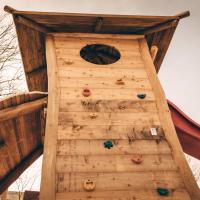Creating an Environment That Encourages Resilience

Resilience takes many forms. In an ideal world, when something breaks, we roll up our sleeves and fix it with enthusiasm. This is akin to what my son did when he was four and a bookshelf fell on a fairly complex Lego masterpiece we had built: He said, “I can be creative and build something else.”
More often, however, we feel frustrated and sad before fixing the problem. The challenge is to be able to move forward from a failure and learn from it, since failures are inevitable in any complex activity. To be successful, you need to create environments where teams and the people on them are free to experiment and where resilience is encouraged.
One common barrier to creating organizations that embrace resilience is a culture that admonishes the appearance of negativity. There are companies where expressing frustration in the face of a challenge is strongly discouraged. While an environment of constant complaining can be unhealthy, complaining that is done consciously can be a force to clear the air and discover problems to solve. Frustration can motivate you to change things, while denying that a problem exists can lead to complacency , which is unlikely to lead to improvement.
A leadership coach once shared a technique to help avoid destructive complaining while also allowing people time to vent: acknowledge that the group wants to complain and set a time limit, after which we can start to move toward finding solutions. With this approach, “frustrations” become “problems” and “challenges,” and with that reframing comes the possibility of progress.
Another barrier to creating an environment that supports resilience is fear of failure. Having opportunities to make changes and experimenting in environments with limited risk builds resilience, according to a New York Times article about how some schools in England are creating playgrounds that, while still safe, expose children to elements of risk. These playgrounds have stacks of two-by-fours, crates, loose bricks, a mud pit, and a tire swing, and a placard informs parents that risks have been “intentionally provided, so that your child can develop an appreciation of risk in a controlled play environment rather than taking similar risks in an uncontrolled and unregulated wider world.”
Much as a playground with limited risks can encourage experimentation and learning for children, creating environments at work that acknowledge that some failures will happen—and supporting the efforts team members make to recover—can help your organization become more effective. You cannot predict every challenge your team will face, but by embracing the existence of risk and providing opportunities to experiment, you can be more productive.
To improve and grow, you need to take risks, and by definition, risky ventures won’t always be successful. Create environments where risks are expected and well managed, and help team members feel comfortable with the possibility that they may fail in small, recoverable ways.

